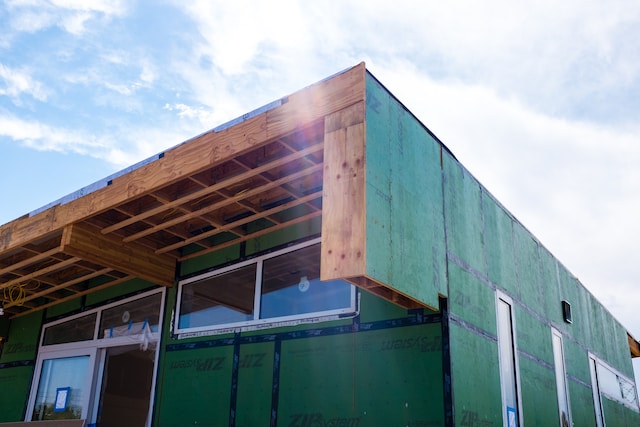
As a multi-floor building owner, you know the importance of having a properly functioning roof. But between leaks to elevation concerns to general wear and tear, keeping your roof in good working order can be quite a challenge! Don’t worry — navigating roofing challenges doesn’t have to be an overwhelming experience. With the help of this blog post, you will learn valuable insight and tips for getting through these issues while keeping your peace of mind intact. Continue reading to discover everything you need to know about maintaining superior-quality roofs for multi-floor buildings.
Understanding Your Building’s Roof Structure and Design
As a building owner or manager, it’s important to understand your roof structure and design. Not only does your roof protect your building from the elements, it can also impact your property’s energy efficiency and overall aesthetic. Knowing the type of roof materials, slope, and layout can help you make informed decisions regarding maintenance and repairs. Understanding your roof’s design can also give you ideas for potential upgrades down the road. Luckily, resources and professionals are available to help you better understand your building’s roof and keep it in top shape for years to come.
The Dangers of Leaks in Multi-Floor Buildings
Leaks can pose a serious threat when it comes to the safety of multi-floor buildings. Water damage can weaken structures, cause mold growth, and even lead to electrical hazards, whether it’s a slow drip or a major burst. That’s why it’s essential to address leaks immediately and take preventative measures to avoid them altogether. Regular inspections and maintenance can help catch leaks early and installing waterproof barriers and proper drainage systems can prevent them from happening in the first place. By being proactive and aware of the dangers of leaks, we can ensure the safety and longevity of our buildings.
Inspecting the Roof for Damage or Wear
Maintaining your home’s roof is crucial to ensure that it stays in good condition and protects you from the elements. Inspecting your roof for damage or wear is an important step. This can include looking for cracked or missing shingles, inspecting the flashing or metal pieces that cover the joints or gaps on your roof, and checking for any signs of water damage or leaking. Regularly inspecting your roof and addressing any issues as soon as they arise can prolong its lifespan and save you from a potentially costly repair or replacement. Remember, prevention is key regarding the roof over your head!
Elevation as a Key Factor for Roof Maintenance
Maintaining a roof can be more complicated than patching up visible damage. Elevation is a key factor that must be considered regarding roof maintenance. Though we might take it for granted, the height of a building can greatly affect the wear and tear on a roof. Buildings at higher elevations may be more susceptible to harsher weather conditions, such as stronger winds and heavier rain. This can result in a need for more frequent roof inspections and repairs. It’s always best to consult with a professional regarding roofing upkeep, but keeping elevation in mind is a good starting point for understanding the unique needs of your own roof.
Establishing Regular Repairs and Maintenance Plans
Regular repairs and maintenance are essential for running your home or business smoothly. With a well-planned maintenance plan, you can avoid unexpected breakdowns and repair costs. Working with a company such as J and K Roofing can help. Maintaining your property in good condition can save you money in the long run. It’s important to work with a trusted professional to establish a regular maintenance schedule that addresses your unique needs. Whether you need routine inspections, repairs, or preventative maintenance, a skilled technician can help ensure your property is in peak condition. So why wait? Start working on your maintenance plan today and enjoy the peace of mind that comes with a well-maintained property.
Preparing Your Multi-Floor Building for Severe Weather
As a building owner or manager, one of your top priorities is ensuring the safety of your occupants. Severe weather can be a serious threat, especially if your building has multiple floors. The good news is that there are steps you can take to prepare your building and minimize the risks associated with severe weather. From ensuring your emergency plans are up-to-date and well-communicated, to inspecting your building’s exterior for potential vulnerabilities, to testing your emergency systems regularly, you can proactively safeguard your occupants and minimize damage to your building. By taking these precautions and being prepared for severe weather, you can have peace of mind and protect your investments.
Having a strong understanding of your multi-floor building’s roof structure and design, being aware of the dangers of leaks in such buildings, inspecting for damage or wear regularly, considering elevation as a key factor when assessing maintenance needs, and establishing plans for regular repairs can ensure that your building remains secure and well protected from severe weather. Taking time to examine all of these aspects can make a huge difference in the longevity of your roof, so it’s important to stay on top of any issues or potential problems. Doing these steps can help guarantee that your multi-floor building is safe and sound in even the harshest conditions.


